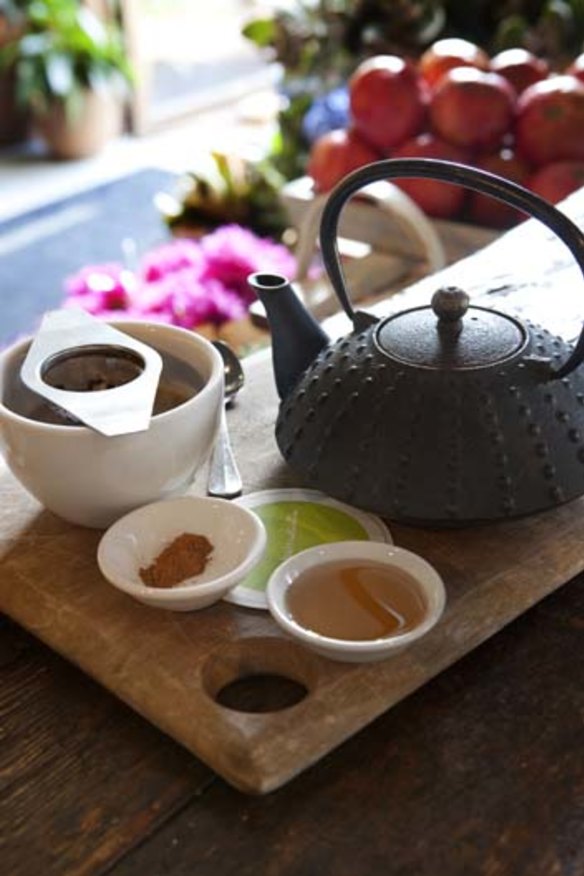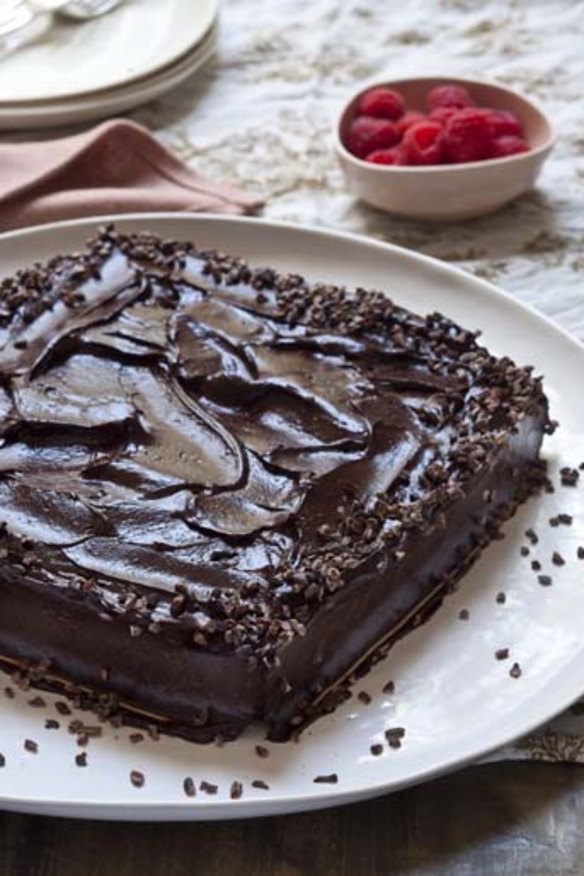Tea, please: Making the perfect cuppa

What is the correct temperature for water to make tea? G. McNicoll
Go to a cafe and ask for a pot of tea. Those who have a separate kettle for boiling water are tea lovers. Those who use the water out of the espresso machine are not. Tea has to be made with water that comes straight from the tap and is freshly heated as it will contain more dissolved air than hot water from urns or espresso machines, which make tea taste flat. As far as black tea goes, there is a difference of opinion on water temperature. Food science guru Harold McGee and Australia's Madura Tea agree on freshly boiled water, while some tea experts prefer tea at just under that, letting the boiled water cool for a minute. Tea should brew for three to five minutes. The Twinings people suggest the perfect brew time for their tea is 3½ minutes. For other types of tea, the water temperature is lower, balancing the power of hot water to dissolve and extract flavour and its ability to damage flavour and texture compounds. For oolong tea, the water temperature should be just over 90 degrees, for Chinese green tea 80 degrees, and Japanese green tea about 70 degrees. Higher temperatures will affect the compounds in Japanese green tea that create its sensations of umami.
I recently made ganache that developed white specks on the surface. What am I doing wrong? J. Parkes
After consulting chocolate expert Kirsten Tibballs from Savour Chocolate & Patisserie Cooking School, we may have an answer. Initially we thought condensation might have formed on the ganache when you took it out of the fridge. Sugar in these wet spots could have dissolved then turned back into white crystals once it dried out. Kirsten then noticed in your notes that you'd changed the recipe to ''expensive 70 per cent cocoa dark chocolate'' instead of using bitter dark chocolate as per the recipe. Bitter dark chocolate is generally 50 per cent cocoa. The 70 per cent cocoa chocolate also has more cocoa butter, so by changing the ingredients to using the richer product, you could have overloaded the ganache with fat, causing the fat in the cocoa and cream to come out of emulsion to form white blooms or spots. Try the recipe again with bitter chocolate as the original recipe called for - it will be cheaper but hopefully no one will notice the difference. Let us know how you go. And please, send photos.
How should I eat an entire fish on the bone? M. Andrada
Unless you're a seal, not in one go. Whole fish on the bone is the best way to eat many fish. Filleted fish lose moisture and flavour. During cooking, the bones in whole fish add flavour to the flesh. I am all for the fish knife, with its broad blade that drops below the handle so you can run it along bones. I was in a fish restaurant recently and asked for one. The waiter said they didn't have much call for them these days. As his colleagues all looked like they were coming down from crystal meth, I decided to bite my tongue before they did. For a fish such as flathead, which will be served belly down, run the knife down the spine, starting at the head and easing away the flesh. For a fish served side down, such as a small snapper, etiquette has diners starting just behind the gills and running the tip of the knife along the spine then flat against the rib cage, releasing the fillet from the head to the tail. Once the flesh has been eaten from one side of the fish, lift the head and bones onto the side of the plate or another plate if provided.

Where can I get good lard? L. Howsham
For some reason, lard is not fashionable in Australia. Why people turn their noses up at eating rendered pig fat is beyond me. The Mexicans love it. They use it to cook their refried beans and enrich the corn dough in their tamales. The Spaniards use it in their biscuits and pastries. Lard from chorizo sausages is spread on toast for breakfast. In Germany, lard is served on bread with pickled cucumber. Lard is the most sublime frying medium for fish and chips. You can make your own by buying pork back fat, removing the skin, chopping the fat into 2.5-centimetre cubes and gently rendering it in a deep tin with a little water in the oven at 100 degrees to 110 degrees for four to eight hours, turning regularly. Strain the lard while still liquid into an airtight container and store in the fridge. One kilogram of back fat yields about 500 grams of lard. This is the way the boys from Pacdon Park in Moama, NSW, make their sweet, slightly nutty, lard, which is available at Skinner & Hackett in Carlton North, La Macelleria in Bondi Beach, Sydney, and Pacdon Park's farm gate store in Moama. Expect to pay $7 for about 250 grams.
Send queries to brainfood@richardcornish.com.au.
The best recipes from Australia's leading chefs straight to your inbox.
Sign up- More:
- Brain food
